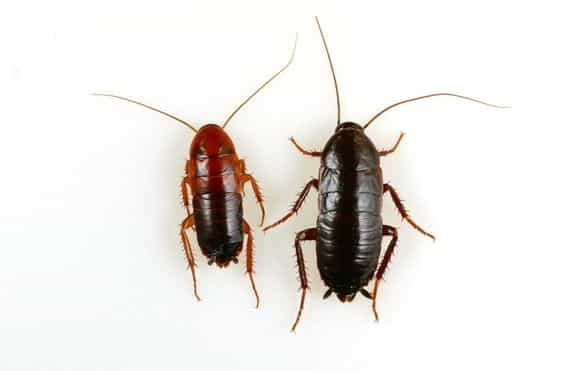Oriental cockroach - One of the biggest cockroach in the world!
[ Read the full article on: https://gbansandyou.com/oriental-cockroach/ ]
Believed to be of African origin despite its name, the oriental cockroach is one of the larger species of cockroach. Oriental Cockroaches (Blatta orientalis) are commonly called "water bugs" or "black beetles". Because they hang out in damp areas, as well as “black beetle cockroaches” because of their smooth, dark bodies.
Today we will know about the Oriental Cockroaches habitat, habits, and many more. So, here we go...
But first!!!!
How do Oriental cockroaches enter our homes without being invited?
These cockroaches prefer homes with plenty of damp, dark, and sheltered areas to breed and develop. Oriental cockroaches often travel through sewers and may come inside through pipes and drains. Abundant outdoor plants may also provide places for these cockroach populations to flourish and get inside houses in search of food. Also, leaking pipes and other plumbing leaks are very charming to Oriental cockroaches.
[caption id="attachment_3674" align="aligncenter" width="575"] Oriental Cockroach[/caption]
Oriental Cockroach[/caption]
How can we identify them?
The Oriental cockroach is shiny black and is about 1.25 inches long. They have wings, but neither the male nor the female cockroach can fly. The total length for the female is 20-27 mm and 18-29 mm for the male. The females have small nonfunctional wings while the males have wings that cover about ¾ of the abdomen. Adults may be very dark brown or black.
Where are they found?
Oriental cockroaches grow in port cities throughout the world. They can be found throughout the United States, as well as in England, Europe, Israel, Australia, and South America.
Are Oriental Cockroaches Dangerous?
Oriental cockroach - One of the biggest cockroach in the world! is known to spread many different types of pathogens, bacterias, and parasitic worms that are dangerous to humans. These pests can pick up germs on the spines of their legs and bodies as they wander through rubbish piles, sewers, and drains and then can transfer these germs onto foods and food preparation surfaces. Recent medical studies have shown that cockroach allergens can cause allergic reactions in humans as well as asthma in children.
Oriental cockroaches typically transfer bacteria and viruses from their legs to food, dishes, utensils, and countertops and are known to spread dysentery, E. Coli, Salmonella, and food poisoning. These pests can contaminate your food and kitchen surfaces, which may make you or your family sick. Besides spreading disease, these pests are just an annoyance to have in your home and they can ruin any food products they come into contact with.
Which places do they love to live in?
Oriental cockroaches tend to travel somewhat more slowly than other species. They are often called "waterbugs" since they prefer dark, moist places. They can often be found around decaying organic matter, and in sewers, drains, damp basements, porches, and other damp locations. They can be found outside in bushes, under leaf groundcover, under mulch, and around other damp places outdoors.
They are commonly found:
- Under cement foundations; undersides of stoops and sidewalks
- Stone walls
- Basements and floor drains and other moist places.
- Crawl spaces
- Cracks in foundations; spaces between the soil and building foundations
- Landscaping mulches
- Bark mulch under shrubs around the foundation
- Thick trees (especially junipers and ivy)
- Under piles and debris
- Garbage and trash dumps
- Water meters
- Abandoned reservoirs
- Water valve pits
Read Also: Blaberus Giganteus - The Biggest Cockroach in the WORLD!
Their Life Cycle?
 Oriental Cockroach Lifecycle (from doyourownpestcontrol)[/caption]
Oriental Cockroach Lifecycle (from doyourownpestcontrol)[/caption]
A female oriental cockroach produces an average of eight egg capsules per lifetime. Each egg capsule or ootheca contains about 16 eggs that are lined up vertically, two by two in the egg case. The egg capsule may be carried from 12 hours to five days and then deposited in a warm sheltered environment where food is readily available. The hatching period for the oriental cockroach is about 42 to 81 days. The female gives no assistance to the young. Nymphs go through seven molts before becoming adults, which takes approximately one year. An adult Blatta orientalis can live from 34 to 180 days, and pairing takes place at any season.
Read the full article on: https://gbansandyou.com/oriental-cockroach/
Comments
Post a Comment